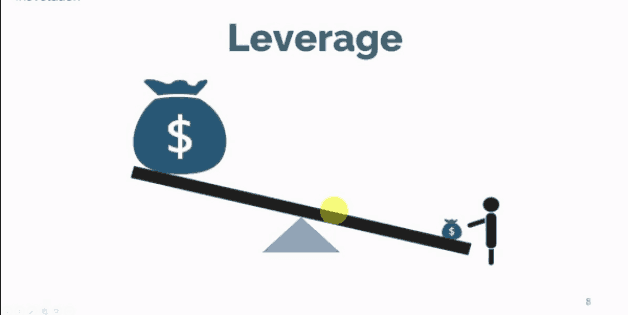
As you streamline manufacturing processes to eliminate waste and shorten the time between receiving and orders, you can also streamline your accounting processes and use them to gather relevant operating information. It can also account for any health insurance or retirement benefits that are part of their employee contracts. Indirect costs are difficult to trace back to the manufacturing of a specific product. Process costing is beneficial for saving time as calculating costs need not to be completed for each individual unit. The downside is that the costs per unit can become inaccurate since rounding up costs per process can introduce discrepancies. Work-in-process (WIP) or work-in-progress inventory refers to products that have made it through part of the manufacturing process but remain unfinished.
How to Account for a Manufacturing Business
FIFO is generally the most popular approach, especially for manufacturers of products with limited shelf lives. Here’s what you need to know to navigate manufacturing accounting successfully, including the best practices for the industry, the most complicated processes involved, and some fundamental terms. By integrating your accounting software with Katana’s cloud manufacturing platform, you’ll get all these essential features and more. Get a demo of Katana, and see why thousands of manufacturers trust Katana to manage their entire business. Sign up for a demo today and unlock the power of streamlined manufacturing operations. Selecting the right tools for managing manufacturing accounting, such as manufacturing ERP systems, is crucial for ensuring the gears of your business run smoothly.
Manufacturing Accounting: An Introductory Guide
- Assume that finished goods are transferred from the factory to the warehouse at production cost plus a 10% manufacturing profit.
- Thus, the derivation of the cost of goods sold is really driven by the accuracy of the inventory valuation procedures that were just described.
- In addition, any abnormal costs incurred, such as excessive scrap, are not recorded in inventory, but instead are charged directly to the cost of goods sold.
- This makes it a favorable costing method for process manufacturers and other companies that otherwise produce large numbers of identical units.
- Because that directly affects your tax liability, the IRS requires that you use specific methods to calculate both numbers.
Standard costing enables manufacturers to follow through with the production process based on a set standard which can later be reassessed based on the variance they calculate by zeroing in on each stage of production. Identifying the margin of profit you earn on the products your business creates and sells is an important part of manufacturing accounting. Margin analysis often involves tracking and accounting for all the online medical billing and coding voucher included from national university costs involved in the production and then subtracting those costs from the total value those steps generate.
By implementing sound strategies and prudent practices, you can optimize financial performance, enhance decision-making processes, and safeguard your business against potential risks. In summary, the accounting for manufacturing businesses is much more detailed than is required for a business that maintains no inventory. The accounting for a manufacturing business deals with inventory valuation and the cost of goods sold. These concepts are uncommon in other types of entities, or are handled at a more simplified level. A manufacturing company reports taxes as a separate item in the income statement after the net profit. The amount of taxes is deducted from the net profit to arrive at the bottom line, i.E., The net profit after tax.
Do you own a business?
In Chapter 2, we look at an alternative approach to recording manufacturing overhead called normal costing. This article explains what manufacturing accounting is, the types of manufacturing costs that must be accounted for, and how to accurately value production costs using different methods and technologies. An integral component of manufacturing accounting lies in efficient inventory management. Employing job costing enables businesses to assign costs to each production run or batch of products, facilitating a comprehensive tracking of expenditures specific to each job. The resulting data can then be leveraged to make informed pricing decisions, optimize production processes, and allocate resources effectively. Features found in accounting software such as inventory management can help you optimize the way you use inventory, such as providing alerts when your stock needs replenishing.
For example, a manufacturer of made-to-order furniture would likely employ job costing. fannie mae selling Variance analysis, which involves comparing your standard costs to your actual expenses, is a great way to reveal areas of overspending, improve production efficiency, and increase cash flow. The first-in-first-out (FIFO) inventory valuation method assumes that the first unit you manufacture is the first one you sell.

The budgeted revenue goal of going through the process shown in Figure 1.7 is to arrive at a cost of goods sold amount, which is presented on the income statement. Custom Furniture Company’s income statement for the month ended May 31 is shown in Figure 1.8 . As you review Figure 1.7 and Figure 1.8 , look back at Figure 1.6 to see how costs flow through the three inventory accounts and the cost of goods sold account. An automated inventory management system facilitates accurate inventory accounting and can greatly reduce the time and cost required to manage physical stock. The costs that contribute to your total manufacturing cost are known as direct costs. This approach is primarily beneficial for manufacturers who produce a relatively low number of unique products.
A final aspect of manufacturing that largely informs manufacturing accounting is production costing. Since adding together direct costs is generally a straightforward affair, this mostly revolves around calculating the per-product share of indirect costs. There are various costing methods that each inform cost accounting in their own way.